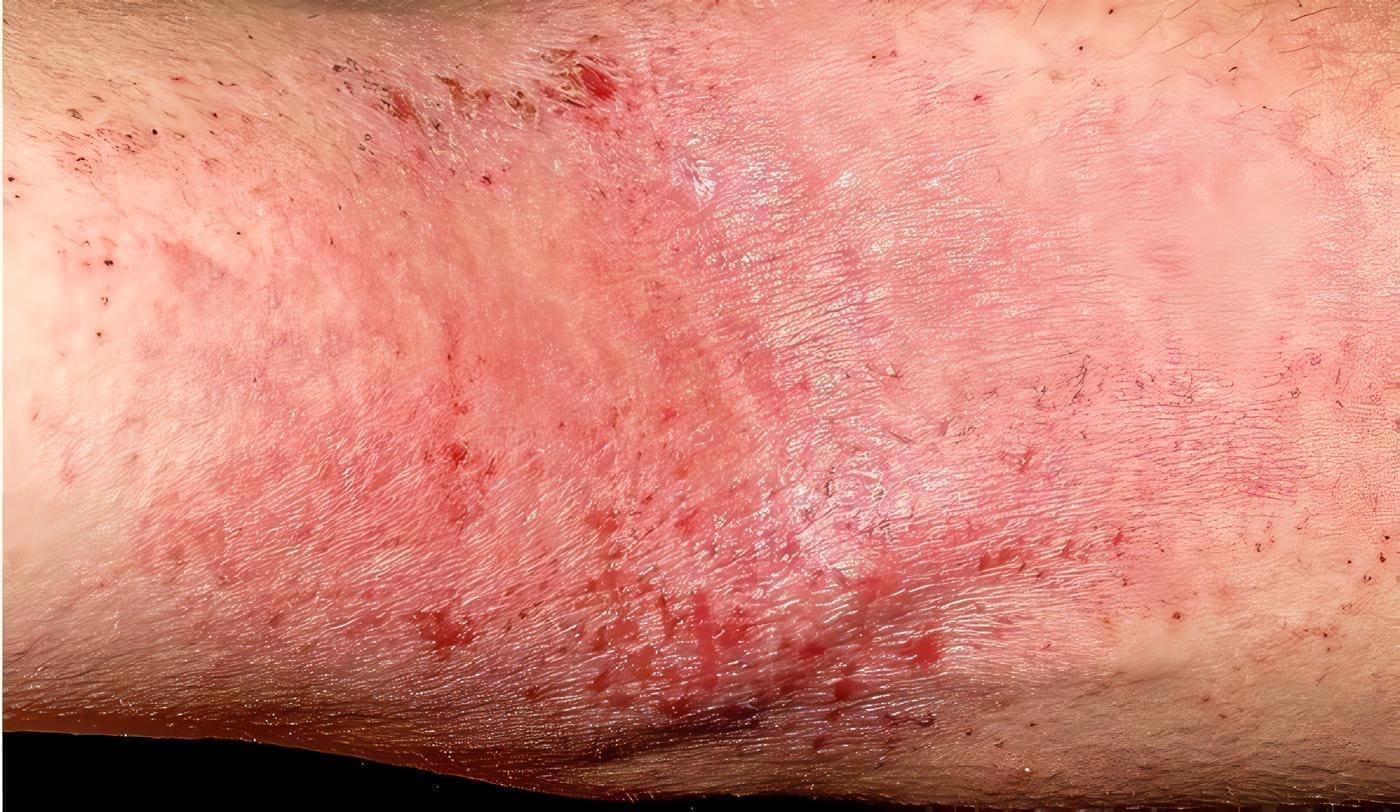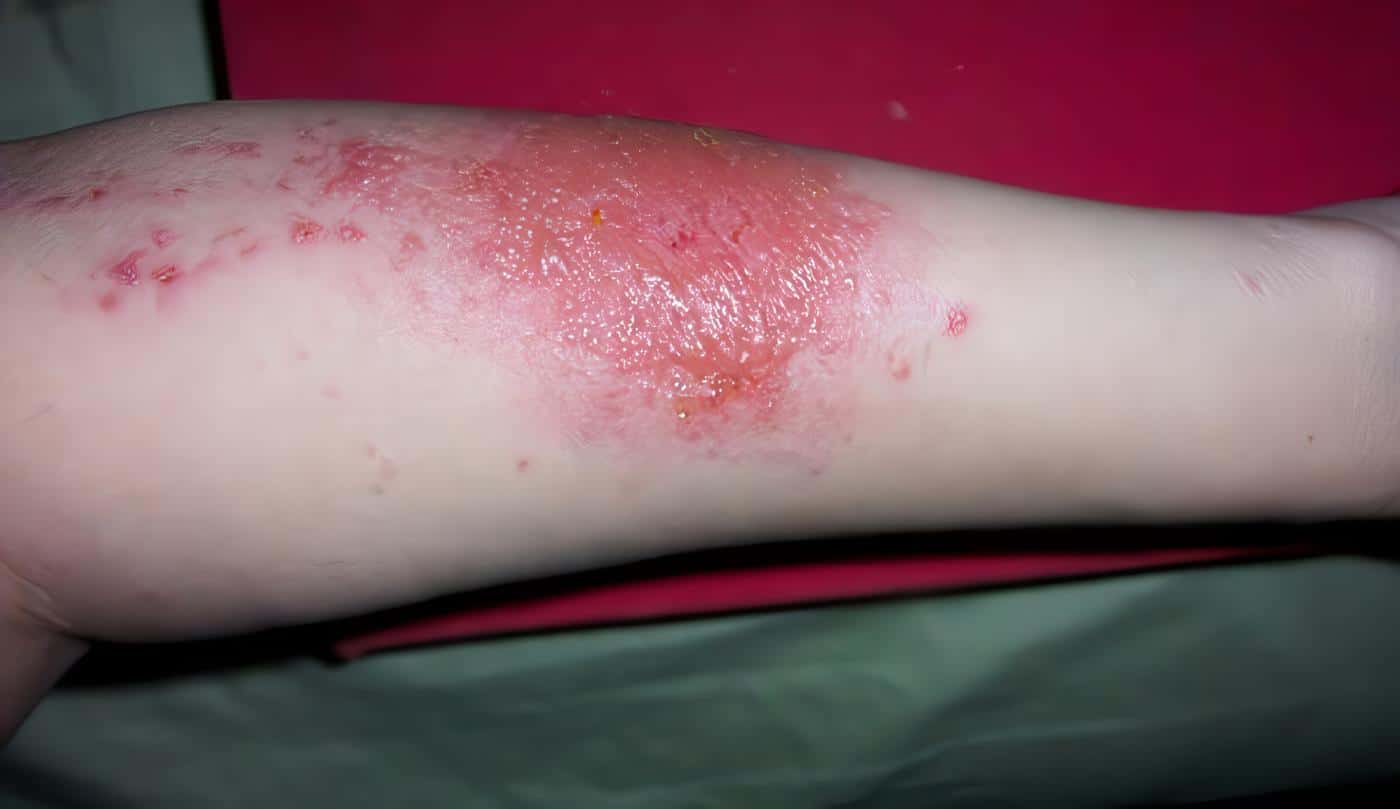- 3M-Occupational Health & Environmental Safety. Respirator tools & software. Available from : https://solutions.3m.com/wps/portal/3M/en_US/Health/Safety/Resources/Four/
- Allmers H, Schmenlerg J, Sckudlik C. Primary prevention of natural rubber latex allergy in the German health care system through education and intervention. J Allergy Clin Inmunol. 2002;110:318-23.
- American Conference of Industrial Hygienists (ACGIH). Air sampling instruments for evaluation of atmospheric contaminants. 8th ed. Cincinatti; 1995. (Part I The Measurement Process Part II Instrumentation).
- American Conference of Industrial Hygienists (ACGIH). TLVs and BEIs: threshold limit values for chemical substances and physical agents; 2007.
- American Conference of Industrial Hygienists (ACGIH). Ventilación industrial. 1ª ed. en español. Valencia: Generalitat Valenciana; 1992.
- American Industrial Higiene Association (AIHA). A strategy for assessing and managing occupational exposures. 3rd ed. Fairfax; 2006.
- American International Health Alliance (AIHA). A strategy for assessing and managing occupational exposures. Exposure Assessment Strategies Committee 2th Ed.
- Vancouver: AIHA Press; 1998. Aragón A, Blanco LE, Funez A, Ruepert C, Lidén C, Nise G, Wesseling C. Assessment of dermal pesticide exposure with fluorescent tracer: a modification of a visual scoring system for developing countries. Ann Occup Hyg. 2006;50(1):75-83.
- Berge WFT, Heerlen DSM. Modelling dermal exposure and absorption trough the skin [on line]. Available from: https://home.planet.nl/-wtberger [cited 2006 May 2].
- Berndt U, Hinnen U, Iliev D, Elsner P. Hand eczema in metalworker trainees–an analysis of risk factors. Contact Dermatitis. 2000;43(6):327-32.
- Berndt U, Hinnen U, Iliev U, Elsner P. Role of the atopy score and of single atopic features as risk factors for the development of hand eczema in trainee metal workers. Br J Dermatol. 1999;140(5):922-24.
- Berndt U, Hinnen U, Lliev D. Is occupational contact dermatitis predictable by cutaneous bioengineering methods?: results of de Swiss metalworkers’ eczema study (PROMETES). Dermatology. 1999;198(4):351-4.
- Bircher A, de Boer EM, Agner T, Wahlberg JE, Serup J. Guidelines for measurement of cutaneous blood flow by laser Doppler flowmetry. A report from the Standardization Group the European Society of Contact Dermatitis. Contac Dermatitis. 1994;30(2):65-72.
- Birgitta K, Drexler H. Effectiveness of skin protection creams as a preventive measure in occupational dermatitis: a critical update according to criteria of evidence-based medicine. Int Arch Occup Environ Health. 2003;76:253-9.
- Booth-Jones AD, Sestito JP, Alterman T. Analysis of dermatitis cases data from occupational injuries and illnesses in the United States: profiles data 1992-2001. Cincinnati, OH: U. S. Department of Health and Human Services, Centers for Disease Control and Prevention, National Institute for Occupational Safety and Health; 2003. Available from: https://www2.cdc.gov/niosh-chartbook/ch2/ch2-12.asp
- Bourke J, Coulson I, English J. Guidelines for care of contact dermatitis. Br J Dermatol. 2001;145:877-85.
- Breuer K, Kapp A. [Inpatient rehabilitation of adults with atopic dermatitis] [artículo en alemán]. Hautarzt. 2006;57(7):592, 594-602. [Se tuvo acceso al resumen en inglés]
- Brown T. In-depth review. Strategies for prevention: occupational contact dermatitis. Occup Med. 2004;54:450-7.
- Bullock W, Ignacio J. A strategy for assessing and managing occupational exposures. 3rd ed. Vancouver: AIHA; 2006.
- Bureau of Labor Statistics (BLS), Survey of occupational injuries and illnesses. Nonfatal (OSHA recordable) injuries and illnesses: case and demographic characteristics. Washington: U. S. Department of Labor, Bureau of Labor Statistics, Safety and Health Statistics Program; 2003. Available from: https://www.bls.gov/iif/oshcdnew
- Caplan KJ. La importancia de las muestras de limpieza de la superficie. Periódico de la Asociación de Higiene Industrial Americana. 1993;54(2):70-5.
- Centers for Disease Control and Prevention (CDC). Control of health and safety hazards in comercial drycleaners. ACGIH-CDC; 1998.
- Centro Internacional de Información sobre Seguridad y Salud en el Trabajo (CIS). Módulos de formación en seguridad química: disolventes [2003 Mayo] Disponible en: https://www.ilo.org/public/spanish/protection/safework/cis/products/safetytm/solvents
- Centro Nacional de Condiciones de Trabajo. Dermatosis por agentes químicos: prevención. Barcelona; 1986.
- Chef AL, Maibach HI. Occupational issues of irritant contact dermatitis. In: Chef AI, Maibach HI, editors. Irritant dermatitis. Berlin: Spriengler; 2006. p. 109-22.
- Cortés JM. Seguridad e higiene del trabajo: técnicas de prevención de riesgos laborales Madrid; 2001.
- Cvetkovski RS, Zachariae R, Jensen H, Olsen J, Johansen JD, Agner T. Prognosis of occupational hand eczema. Arch Dermatol. 2006;142(3):305-11.
- Cvetkovski RV, Jensen H, Olsen J, Johansen JD, Agner T. Relation between patients’ and physicians’ severity assessment of occupational hand eczema. Br J Dermatol. 2005;153(3):596-600.
- De Paepe K, Hachem J-P, Vanpee E, Goossens A, Germaux MA, Lachapelle JM, et al. Beneficial effects of a skin tolerance-tested moisturizing cream on the barrier function in experimentally-elicited irritant and allergic contact dermatitis. Contact Dermatitis. 2001;44 (66):337-43.
- Dickel H, Kuss O, Schmidt A, Kretz J, Diepgen TL. Importance of irritant contact dermatitis in occupational skin disease. Am J Clin Dermatol. 2002;3(4):283-9.
- Diepgen T, Coenraads PJ. Sensitivity, specificity and positive predictive value of patch testing: the more you test, the more you get? Contact Dermatitis. 2000;42:315-7.
- Flyvholm M-A, Mygind K, Sell L, Jensen A, Jepsn KF. A randomised controlled intervention study on prevention of work related skin problems among gut cleaners in swine slaughterhouses. Occup Environ Med. 2005;62(9):642-9.
- Food and Drug Administration (FDA). FDA public health advisory-elidel (pimecrolimus) cream and protopic (tacrolimus) ointment. Available from: https://www.fda.gov/cder/drug/advisory/elidel_protopic
- Freedberg IM, Eisen AZ, Wolff K, Austen KF, Goldsmith LA, Katz S. Fitzpatrick’s dermatology in general medicine. 5th ed. New York: McGraw Hill; 1999.
- Frosch P, Peiler D, Grunert V, Grunenberg B. Efficacy of barrier creams in comparison to skin care products in dental laboratory technicians–a controlled trial. J Dtsch Dermatol Ges. 2003;1(7):547-57.
- Gamboa L. Inmunología cutánea. Revista de la Sociedad Colombiana de Medicina del Trabajo. 2000;13(1):24-6.
- Gawkroger DJ. Patch testing in occupacional dermatology. Occup Environ Med. 2001;58(12):823-8.
- Health and Safety Executive (HSE). Medical aspects of occupational skin diseases. Guidance Note MS 24. 2nd ed. London: HSE; 2007. Available from: https://www.hse.gov.uk/pubns/indg233.pdf www.hse.gov.uk/pubns/ms24.pdf
- Hernández N. Dermatitis de contacto a la “Astromelia”. Revista de la Asociación Colombiana de Dermatología y Cirugía Dermatológica. 2002;10(1):785-6.
- Hernández N. Los alergenos más famosos en los últimos años. Revista de la Asociación Colombiana de Dermatología y Cirugía Dermatológica. 2003;11(4):335-8.
- Hernández N, Heras F, Conde-Salazar L. Dermatitis de contacto en floricultores: revisión de la literatura mundial y el enigma en Colombia. Revista de la Sociedad Española de Medicina y Seguridad del Trabajo. 2005;1(3-4):223-31.
- Hernández N, Solias Y, Conde-Salazar L. Frecuencia de alergia al látex en trabajadores del Hospital Militar Central de la ciudad de Bogotá en el año 2005. Rev Med. 2007;15(1):54-60.
- Heron RJ. Worker education in the primary prevention of occupational dermatoses. Occup Med. 1997;47(7):407-10. Instituto Nacional de Seguridad e Higiene en el Trabajo (INSHT). Métodos de mediciones para agentes químicos: apéndice 5. Guía técnica para la evaluación y prevención de los riesgos presentes en los lugares de trabajo relacionados con agentes químicos. Madrid; 2003. Disponible en: https://www.mtas.es/insht/practice/g_AQ
- International Agency for Research on Cancer (IARC). Monographs on the evaluation of the carcinogenic risk of chemicals to humans: pharmaceutical drugs (vol. 50). Lyon; 1990. International Labor Office (ILO).
- International chemical control tool kit. Géneve; 2004. Available from: https://www.ilo.org/public/english/protection/safework/ctrl_banding/toolkit/main_guide.pdf
- International Labor Office (ILO). International chemical control toolkit: draft guidelines. Géneve: International Labour Office 4 Ronte des Morillons 1211; 2004.
- Kampf G, Wigger-Alberti W, Schoder V, Wilhem KP. Emollients in a propanol-based hand rub can significantly decrease irritant contact dermatitis. Contact Dermatitis. 2005;53(6):344-9.Kutting B, Drexler H. Effectiveness of skin protection creams as a preventive measure in occupational dermatitis: a critical update according to criteria of evidence-based medicine. Int Arch Occup Environ Health. 2003;76:253-9. Leidel NA. Validez y representatividad de las mediciones ambientales en higiene industrial. Documento procedente de los Servicios Técnicos de Prevención MAPFRE II Simposium de Higiene Industrial, Madrid, España; 1979.
- Ley 55 de 1993 sobre el Convenio sobre la seguridad en la utilización de los productos químicos en el trabajo. Diario Oficial de Colombia 40936. 1993 Jul 6.
- Loffler H, Bruckner T, Diepgen T, Effendy I. Primary prevention in health care employees: a prospective intervention study with a 3-year training period. Contact Dermatitis. 2006;54(4):202-9.
- Loh TH, Leow Y-H, Gan SL, Goh CL. Prognosis of occupational dermatosis. Contact Dermatitis. 2002;47:166. Marks JG, DeLeo VA. Contact urticaria. In:
- Marks JG, De Leo VA, editors. Contact and occupational dermatology. New York: Mosby; 1997. p. 353-64. Marks JG, DeLeo VA. Evaluation and treatment of patients with contact dermatitis. In:
- Marks JG, De Leo VA, editors. Contact and occupational dermatology. New York: Mosby; 1997. p. 15-31.
- Marks JG, DeLeo VA. Occupations commonly associated with contact dermatitis. In:
- Marks JG, De Leo VA, editors. Contact and occupational dermatology. New York: Mosby; 1997. p. 309-50. Marks JG, DeLeo VA. Patch testing. In:
- Marks JG, De Leo VA, editors. Contact and occupational dermatology. New York: Mosby; 1997. p. 32-55.
- Meding B. Differences between the sexes with regard to work-related skin disease. Contact Dermatitis. 2000;43(2):65-71.
- Ministerio de la Protección Social de Colombia. Guía de atención integral basada en la evidencia para neumoconiosis (silicosis, neumoconiosis del minero de carbón y asbestosis). Bogotá; 2006.
- Mygind K, Sell L, Flyvholm M-A, Jepsen KF. High-fat petrolatum-based moisturizers and prevention of work-related skin problems in wet-work occupations. Contact Dermatitis. 2006;54(1):35-41.
- National Institute for Occupational Safety and Health (NIOSH). Pocket guide to chemical hazards. Washington; 2005. Available from: https://www.cdc.gov/niosh/npg/defaultl.Benceno: https://www.cdc.gov/niosh/npg/npgd0049l.Apéndice E: https://www.cdc.gov/niosh/npg/nengapdxl#e
- National Institute Occupational Safety and Health (NIOSH). Guide for evaluating the performance of chemical protective clothing (CDC); 1990. Available from: https://cdc.gov/niosh/90-109l. National Institute Occupational Safety and Health (NIOSH). Industrial hygiene sampling: sampling strategies determination of complance and classification of violations for air contaminants. Cincinati; 1980.
- National Institute Occupational Safety and Health (NIOSH). Occupational exposure to metalworking fluids. Cincinati; 1998.
- National Institute Occupational Safety and Health (NIOSH). Pocket guide to chemical hazards. Publication No. 97-140. Cincinati; 1997.
- National Institute Occupational Safety and Health (NIOSH). Pocket guide to chemical hazards; 2005. Available from: https://www.cdc.gov/niosh/npg/defaultl.
- National Institute Occupational Safety and Health (NIOSH). Preventing allergic reactions to natural rubber latex in the workplace. Publication No. 97-135. Cincinatti: NIOSH. Available from: https://www.cdc.gov/niosh/latexaltl#recommendations
- National Institute Occupational Safety and Health (NIOSH). Recommendations for Chemical Protective Clothing: a companion to the NIOSH Pocket Guide to Chemical Hazards; 1998. Available from: https://www.cdc.gov/niosh/ncpc/ncpc2l
- National Institute Occupational Safety and Health (NIOSH). Respirator selection logic; 2004. Available from: https://www.cdc.gov/niosh/docs/2005-100/chapter2l#chapt2a
- National Library for Health. Clinical knowledge summaries: dermatitis-contact. Available from: https://cks.library.nhs.uk/dermatitis_contact/view_whole_guidance.
- Nicholson PJ, Cullinan P, Taylor AJ, Burge PS, Boyle C. Evidence based guidelines for the prevention, identification, and management of occupational asthma. Occup Environ Med. 2005;62(5):290-9.
- NORLABOR Pamplona. Consejo Interterritorial del Sistema Nacional de Salud. Protocolos de vigilancia sanitaria específica: dermatosis laborales. 2003. Available from: https://www.unex.es/unex/servicios/servicio_prevencion/archivos/ficheros/Protocolos/Dermatosis.pdf
- Occupational Safety and Health Administration (OSHA). Acrylamide exposure during chemical grouting operations; 1990.
- Occupational Safety and Health Administration (OSHA). Chemical hazard comunicaton; 1998.
- Occupational Safety and Health Administration (OSHA). Controlling occupational exposure to hazardous: drugs. Washington.
- Occupational Safety and Health Administration (OSHA). Dermal hazardous exposure; 1995.
- Occupational Safety and Health Administration (OSHA). Final rule on assigned protection respirators factors; 2006. Available from: https://usachppm.apgea.army.mil/Documents/FACT/55-011-1106-Assigned_Protection_Respirators_Factors.pdf
- Occupational Safety and Health Administration (OSHA). Regulations standars-29CFR1910-134: respiratory requirements for selected chemicals. U. S. Department Labor.
- Occupational Safety and Health Administration (OSHA). Safety & health practitioner’s guide to skin. Worksites exposures. Cement Portland a component in. What problems does cement cause? Electronic library of construction occupational safety and Health; 2000.
- Occupational Safety and Health Administration (OSHA). Surface contamination; 2004.
- Organización Internacional del Trabajo (OIT), Ministerio de Trabajo y Asuntos Sociales de España. Enciclopedia de salud y seguridad en el trabajo. 4ª ed. Madrid; 1998.
- Organización Internacional del trabajo (OIT). Centro internacional de información sobre seguridad y salud en el trabajo (CIS). Actualización Mayo 2003. Versión electrónica: ww.ilo.org/public/spanish/protection/safework/cis/products/safetytm/solvents.
- Peate WF. Occupational skin disease. Am Fam Physician. 2002;66(6):1025-32.
- Perhins JL. Modern industrial hygiene: air sampling and laboratory analysis. Col Uno NY. p. 369-387. p. 389-423.
- Perkins JL. Modern industrial hygiene. New York: Van Nostran Reinhold; 1997. Pinnagoda J, Tupker RA, Agner T, Serup J. Guidelines for transepidermal water loss (TEWL) measurement. A report from the Standardization Group of the European Society of Contact Dermatitis. Contact Dermatitis. 1990;22(3):164-78.
- Plog B. Fundamentals of industrial hygiene. 3rd ed. National Safety Council; 1988.
- Popendorf W. Industrial hygiene control of airborne chemical hazards. Boca Ratón: Taylor & Francis; 2006.
- Primary Care Dermatology Society, British Association of Dermatologists. Guidelines for the management of atopic eczema; 2006. Available from: https://www.bad.org.uk/healthcare/guidelines/PCDSBAD-Eczema.pdf
- Rock JC. Occupational air sampling strategies. In: Cohen BS, Hering SV, editors. Air sampling instruments. 8th ed. ACGIH; 1995.
- Rubio Romero JC. Gestión de la prevención de riesgos laborales OSHAS-18001: directrices OIT y otros modelos. Madrid; 2002. p. 1-44.
- Saary J, Qureschi R, Palda V, DeKoven J, Pratt M, Skotnicki-Grant S, et al. A systematic review of contact dermatitis treatment and prevention. J Am Acad Dermat. 2005;53:845-55.
- Sama SR, Bushley A, Cohen M, Cotey M, Park B, Kaufman J. Work-related skin disorders in Washington State, 1993-1997. Olympia (WA): Department of Labor and Industries; 1998. Available from: https://www.lni.wa.gov/Safety/Research/Dermatitis/files/derm93_7.pdf
- Saripalli YV, Gadzia JE, Belsito DV. Tacrolimus ointment 0.1% in the treatment of nickel-induced allergic contact dermatitis. J Am Acad Dermatol. 2003;49:477-82.
- Schwanitz HJ, Uter W. Interdigital dermatitis: sentinel skin damage in hairdressers. Br J Dermatol. 2000;142:1011-2.
- Seidenari S, Guisti F. Atopy. In: Chef AI, Maibach HI, editors. Irritant dermatitis. Berlin:
- Spriengler; 2006. p. 184-95. Spiewak R, Dutkiewick J, Skorska C. Detection of specific IgEas a screening tool for cow and swine breederes’ occupational allergic dermatoses. Ann Agric Environ Med. 2000;7:145-147.
- Steege A, Barón S. Analysis of the National Agricultural Workers Survey (NAWS) Occupational Injury and Health Supplement. Cincinnati, OH: U. S. Department of Health and Human Services, Centers for Disease Control and Prevention, National Institute for Occupational Safety and Health; 2002.
- Talty JT. Industrial, hygiene engineering recognition, measurement, evaluation and control. New Jersey: Noyes Publications; 1985.
- Uter W, Pfalhlberg A, Gefeller O, Schwanitz HJ. Preventing skin damage in beauticians [abstract del artículo en alemán]. Gesundheitswesen. 2001 Mar;63 Suppl 1:S32-4. Available from: https://www.ncbi.nlm.nih.gov/sites/entrez?Db=pubmed&Cmd=ShowDetailView&TermToSearch=11329916&ordinalpos=128&itool=EntrezSystem2. PEntrez.Pubmed.Pubmed_ResultsPanel.Pubmed_RVDocSum.Uter W,
- Schwanitz HJ, Pfalberg A, Gefeller O. Atopic signs and symptoms: assesing the atopic score concept. Dermatology. 2001;202:4-8.
- van Wendel de Joode B, Bierman EPB, Brouwer DH, Spithoven J, Kromhout H. An assessment of dermal exposure to semi-synthetic metal working fluids by different methods to group workers for an epidemiological study on dermatitis. Occup Environ Med. 2005;62:633-41.
- van Wendel de Joode B, Vermeulen R, Heederick E, van Ginkel K, Kromhout H. Evaluation of two self-administered questionnaires to ascertain dermatitis among metal workers and its relation with exposure to metal working fluids. Contact Dermatitis. 2007;57(1):14-20.
- van Wendel de Joode B, Vermeulen R, van Hemmen J J, Fransman W, Kromhout H. Accuracy of a semiquantitative method for Dermal Exposure Assessment (DREAM). Occup Environ Med. 2005;62(9):623-32. van Wendel de Joode B, Brouwer DH,
- Vermeulen R, van Hemmen JJ, Heederik D, Kromhout H. DREAM: a method for semi-quantitative dermal exposure assessment Ann Occup Hyg. 2003;47(1):71-87. Vermeulen R, Kromhout, Bruynzeel DP, de Boer EM. Ascertainment of hand dermatitis using a symptom-based questionnaire; applicability in an industrial population. Contact Dermatitis. 2000;42(4):202-6.
- Vincent R, Bonthoux F, G Mallet JF, Iparraguirre, S Rio. Methodologie d’ evaluation simplifiée du risqué chimique. INRS. Hygiéne et Sécurité du Travail. 2005;200:39-62.
- WHO/IPCS/ILO. Fichas internacionales de seguridad química. Disponible en: https://www.mtas.es/insht/ipcsnspn/Introducci
- Wigger-Alberti W, Caduff L, Burg G. Experimentally induced chronic irritant contact dermatitis to evaluate the efficacy of protective creams in vivo. J Am Acad Dermatol. 1999;40:590-6.
- Wohrl S, Kriechbaumer N, Hemmer W, Focke M, Brannath W, Götz M, et al. A cream containing the chelator DTPA (diethylenetriaminepenta-acetic acid) can prevent contact allergic reactions to metals. Contact Dermatitis. 2001;44(4):224-8.
- Zhai H, Maibach HI. Barrier creams and emollients. In: Chef AI, Maibach HI, editors. Irritant dermatitis. Berlin: Spriengler;2006. p. 478-85.
Autor
La Pontificia Universidad Javeriana de Colombia cuenta con un subcentro de Seguridad Social y Riesgos Profesionales en el cual se realizan, entre otras cosas, la elaboración de guías de práctica de enfermería basadas en la evidencia. Esta área de trabajo es liderada por la Facultad de Enfermería. En colaboración con el Ministerio de la Protección Social de la República de Colombia. Derechos reservados.
Otros temas relacionados








